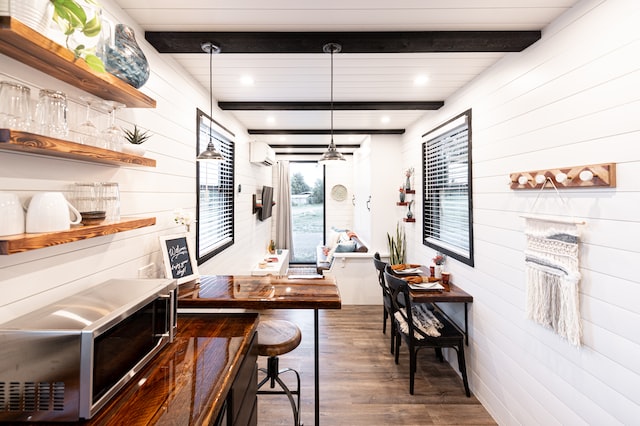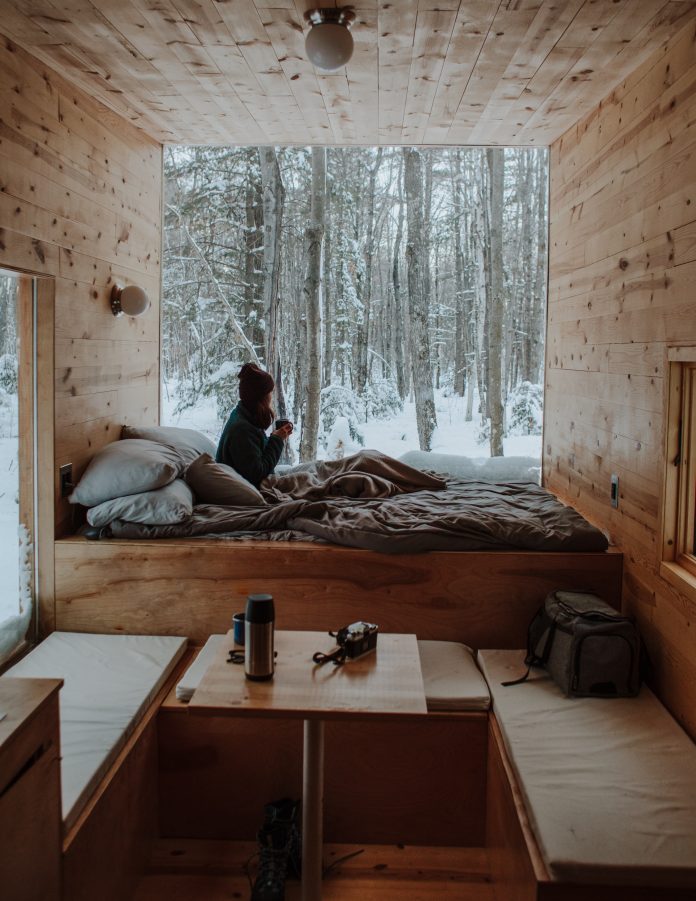The increase in housing costs, alongside people’s desire to live in smaller, more mobile homes, has increased the demand for tiny houses, especially those that can be moved easily. The trend is not ending soon, as the tiny homes market is expected to grow by $3.57 billion by 2025.
In recent years, tiny homes have evolved. They come in various types and designs, appealing to people from many walks of life, including pensioners, couples looking for their first home, and minimalists. Although tiny homes are typically between 100 and 400 square feet, they are built to fit your needs, with all the necessities fitted into creative multi-purpose spaces.
Why should you move into a tiny house? If you’re concerned about saving on housing costs and home maintenance, a tiny house is a solution.
Here are five reasons a tiny house can help you live a simpler life:
1. Saves Money on Mortgage

Tiny houses rose in popularity during the Great Recession of 2007 as families sought new ways to save money. They are still prevalent in minimalist living because they allow people to live in more expensive areas without the burden of high mortgages. According to a report, 68% of all tiny house homeowners have no mortgage, compared to 29% of the other homeowners.
The average cost of a fully built tiny home ranges from $30,000 to $60,000, significantly less than a traditional home, which is around $279,859. However, remember that the cost will determine whether you purchase a brand-new, expertly constructed tiny house, a used tiny house, or the supplies to build one yourself. If you don’t want to make, you can opt for one of the prebuilt top rated tiny homes.
2. Saves Energy Costs

Because there is less space to heat or cool in a smaller home, it is more energy efficient. Besides, tiny homes naturally use less gas or electricity because they require less energy to heat or cool them. Many are equipped with energy-saving systems that enable them to run off the grid. Many tiny homes get their power from renewable sources, like solar, wind, or micro-hydro, as opposed to fossil fuels.
A tiny house uses only about 7% of a traditional house’s energy. Alternative energy sources like solar panels are also frequently used in tiny houses. Propane is also an excellent choice for heating and cooking because it is frequently less expensive than natural gas and can be installed with aboveground tanks. Tiny homes often have composting toilets instead of a sewer line connection for the environmentally conscious.
3. Flexible and Movable

The freedom of living in a tiny house is appealing. You will be able to move your tiny house around with ease if it has wheels. This is a fantastic option for everyone, not just business travelers who want to explore the world and change scenery whenever they want.
If your circumstances force you to relocate, you won’t have to waste time and energy selling your home or looking for a new home in a different neighborhood. You can pack your belongings and relocate to a new city anytime or go on a road trip without worrying about lodging.
In addition, you can minimize payments on annual property taxes and land costs by choosing a tiny mobile house. This will give you the flexibility to have a home that moves with you at a fraction of the cost, even though you will still need to find a place to put your tiny house on.
Being mobile provides numerous benefits, including the ability to explore and experience places throughout the country.
4. Easy to Clean

A tiny house is simple to maintain. Homeowners can, therefore, spend more time on their jobs, hobbies, and relationships because they have less space to clean and fewer appliances to maintain.
Having a smaller home will reduce the time you spend cleaning, and you’ll also save money. You will only need to concentrate on cleaning less than 500 square feet rather than 2000 square feet. You’ll have more free time and spend less on cleaning supplies. You might only need to buy them once a year rather than every week.
5. Minimalist

Only necessary appliances can fit in a tiny house. Because of its small size, you’d have to declutter and eliminate possessions you do not need or use. You will inevitably consume less in the future if you simplify your life and donate, gift, or recycle unwanted items. Additionally, you will be more careful about your purchases and produce less waste that is dumped in landfills as a result.
While most of the world is consumed by consumerism and the need to accumulate more possessions, people who live in tiny homes prefer a simpler lifestyle. Many residents choose to live without many modern distractions like widescreen television sets, stereo systems, and other electrical appliances. They also need fewer light fixtures because of their smaller living space.
In Conclusion
Tiny homes’ construction and upkeep costs have been falling as they gain popularity. Every component that goes into it is entirely under your control. Everything, down to the light fixtures and power source, is entirely up to you. These are fantastic ways to simplify your life and save money; some even give you the freedom to travel.








